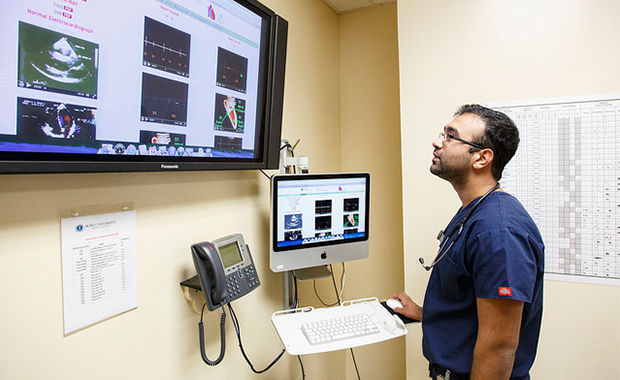Career Momentum: Online EMBAs Offer A Flexible Advantage
Online Education Executive MBAs offer many advantages to women looking to elevate their career to the next level.
Although many busy professional women want to advance their career with a graduate degree, they are often faced with a considerable dilemma — how can they find the time to pursue a full-time program without losing career momentum? Many do not see a graduate program such as an Executive MBA (EMBA) as a viable option. But, in today’s increasingly online world, there is a growing alternative to the traditional class-based model: the online EMBA, which can work beautifully for busy women and others who need more flexibility.
 There is a problem, in that MBA programs are overwhelmingly male-dominated, with a few schools graduating seven men for every three women, according to Canadian Business’ “Canada’s Best MBAs 2016.” While graduating with an EMBA or MBA degree will not guarantee a senior management position, holding an advanced business degree can give ambitious women a competitive edge.
There is a problem, in that MBA programs are overwhelmingly male-dominated, with a few schools graduating seven men for every three women, according to Canadian Business’ “Canada’s Best MBAs 2016.” While graduating with an EMBA or MBA degree will not guarantee a senior management position, holding an advanced business degree can give ambitious women a competitive edge.
Online programs save women time
Some MBA and EMBA programs do address the needs of busy women, offering more flexible schedules or online courses. According to Sheri McKillop, Associate Dean of the University of Fredericton’s Sandermoen School of Business, online programs can help women who are juggling a variety of roles, as they are more accommodating than traditional programs. With online learning, “there are savings on time, on energy, and on getting to class,” says McKillop, herself a graduate of Sandermoen’s online EMBA program.
Barb Watts of Barrie, Ontario, a 2015 EMBA graduate, is one woman who was attracted by the flexibility of an online program. Working full-time in her role as the Associate Dean of Georgian College’s School of Business, Watts found herself squeezed for time and could not have managed the additional travelling time that a traditional program would have required. “It was very much a balancing act in terms of keeping everything rolling at the same time,” says Watts. Initially apprehensive about working in virtual groups, Watts has just created her first online course for Georgian. “Now that I’ve been a student, I’ve sat in the seat, I’ve drunk the Kool-Aid — and I loved it.”
In addition to teaching her how to develop a working rapport with people she had never met in person, the experience enhanced her ability to manage time, projects, and team dynamics. Watts enjoyed engaging with faculty and other students, finding that weekly check-ins created a collaborative environment similar to that of a traditional classroom.
Collaboration keeps students stimulated
In more recent years, there’s been a trend towards learners supporting each other through social media, peer assessment, discussion groups, and online study groups. This collaboration allows learners to build valuable relationships with other similarly motivated individuals who want to balance their ambitions with their personal lives. And, because online students hail from places all over the globe — New Brunswick, downtown Toronto, and Hong Kong — chances are at least one student will bring a global perspective to the discussion.
The technology used in online learning is improving rapidly all the time. For example, a report by the Canadian Virtual University notes how online classes make use of innovations like pop-up feedback during quizzes, or interactive visuals that illustrate complex relationships. Features like these increase interactivity and learning outcomes and make online learning a more stimulating experience.





.jpg)















